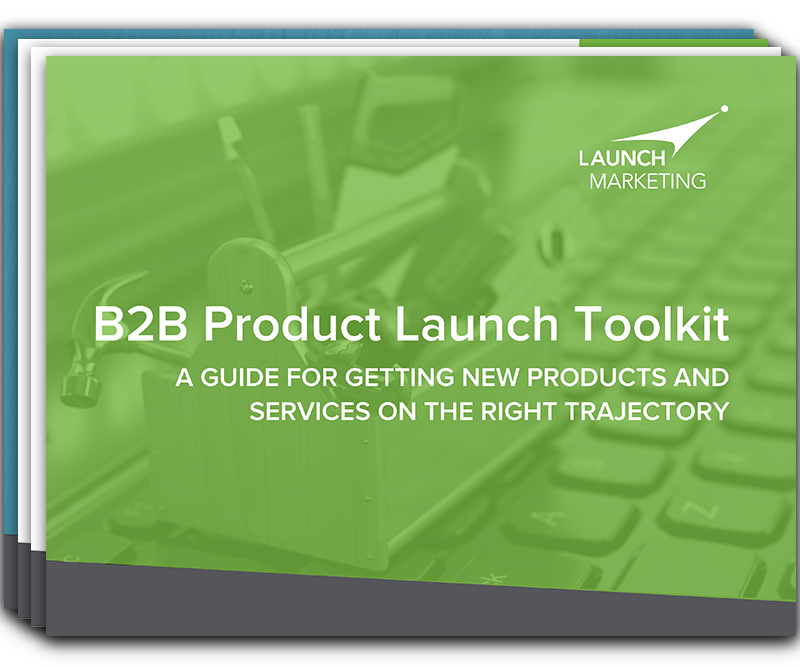
The conceptualization and launch of a new product is an exciting, yet high-pressure situation where almost 95% of new products miss the mark. Often times these failed launches happen because companies do not know how to effectively position the product and convey its benefits, which is critical to its short- and long-term success. How can you effectively market your new product to ensure success and growth? Discover the process of a well-rounded, effective new product marketing strategy in this blog.
Assess the Market for Gaps
Before tackling a new product marketing strategy, your product must be well-defined and there must be a need for it in the current market. Researching what is happening in the market and what is available will help you better gauge where your product will fit and what you should promote. Buyers are overwhelmed with more products than ever before, so yours must stand out. Remember to help validate your findings you can test theories and receive feedback from customers and stakeholders. This provides you with insights so that you have a better understanding of what customers are looking for.
Evaluate and Determine Your Competition
New product marketing cannot be successful without understanding and determining the competition. Having insights into their product, marketing and more, can tell you how to differentiate to obtain more leads. It is important to utilize research techniques to obtain this information and use it as the building blocks of your strategy. Check out these tips below to get started.
- Gather information from social media, their website and advertising efforts. These are key channels that convey a lot of information and can help you get a sense of messaging and promotional
efforts. - Evaluate strengths and weaknesses. You can do this by looking at reviews, testimonials, customer loyalty and more.
- Analyze their position in the market. How do they communicate their value? What is their unique value proposition? Carefully looking at their market position can reveal gaps for your team to capitalize on.
Understand Your Audience
When conceptualizing your product, you are thinking about the audience. Who needs this product? Why do they need this product? These are just a few questions that you might have answered, but they are crucial. Once you have defined the ideal audience for this product, it is important to understand what customers are looking for. With the number of options buyers have, it takes something special from your product, or marketing efforts, to yield a conversion. Are prospects looking for a low price point? Are they looking for a simple or feature-heavy product? What is the goal of using your solution? These are a few guiding questions to get to know your audience even more. While the product is the star, the marketing is what generates the star power. We will dive into this in our B2B messaging section, but the insights captured from audience research will serve as the foundation.
Craft Messaging and Positioning
Messaging and positioning are the cornerstone of strong new product marketing. Understanding your audience, determining competition, assessing the market space and everything we have talked about before is the fuel that launches your messaging and positioning.
It is instrumental to position your product effectively by using the insights you gathered. You want to position your product so that your customers perceive it as something that helps solve the challenges they are facing. It is important for them to positively associate your product with something that can help them achieve their goals. Think about what sets you apart from the competition and make those aspects shine. Always keep in mind the characteristics of your target audience when doing so. You are not targeting everyone; you are looking to appeal to a subset of people. To assess your B2B strategy and messaging, use the questions in this blog.
Analyze Success Metrics and Adjust Tactics
Remember that your product is new. It might not be generating millions of dollars a few months after launch, but analyzing progress helps guide your team to make marketing adjustments. Below are a few metrics to consider tracking that will help you gauge success.
- Number of Trials Sign-ups or Demo Requests: This number can tell you the level of interest in the new product. It can be difficult to know what a high or low number is, but if you have data on previous product launches, this might be a reference point to compare with. You can also look at sales projections to see if the number of trial sign-ups or demo requests would put you on track, below or above those projections. Improving this number means boosting efforts on the more effective marketing channels. Determine what marketing channels are bringing in the most leads and put more time and resources into them.
- Win Rates: Lead-to-buyer conversion is a key metric to keep track of. If you are generating a considerable number of leads but cannot get many of those to convert, it might be time to reevaluate. According to research, 6% is considered average for B2B companies, so use this as your baseline. Whether it is removing barriers to conversion or simplifying steps, there might be things you can cut out or add to make the process more effective.
New Product, New Opportunity
A new product opens the door to many new opportunities. Not only for your company but for your marketing as well. You can explore new strategies or plan innovative campaigns that help generate more leads. If you have any product launch questions or want assistance with your B2B product launch, let us know! We’ve helped over 80 companies with a product launch marketing plan that set them up for product launch success! Contact us today or request a free marketing consultation to get started.
 B2B Product Launch Toolkit
B2B Product Launch Toolkit
There are no comments